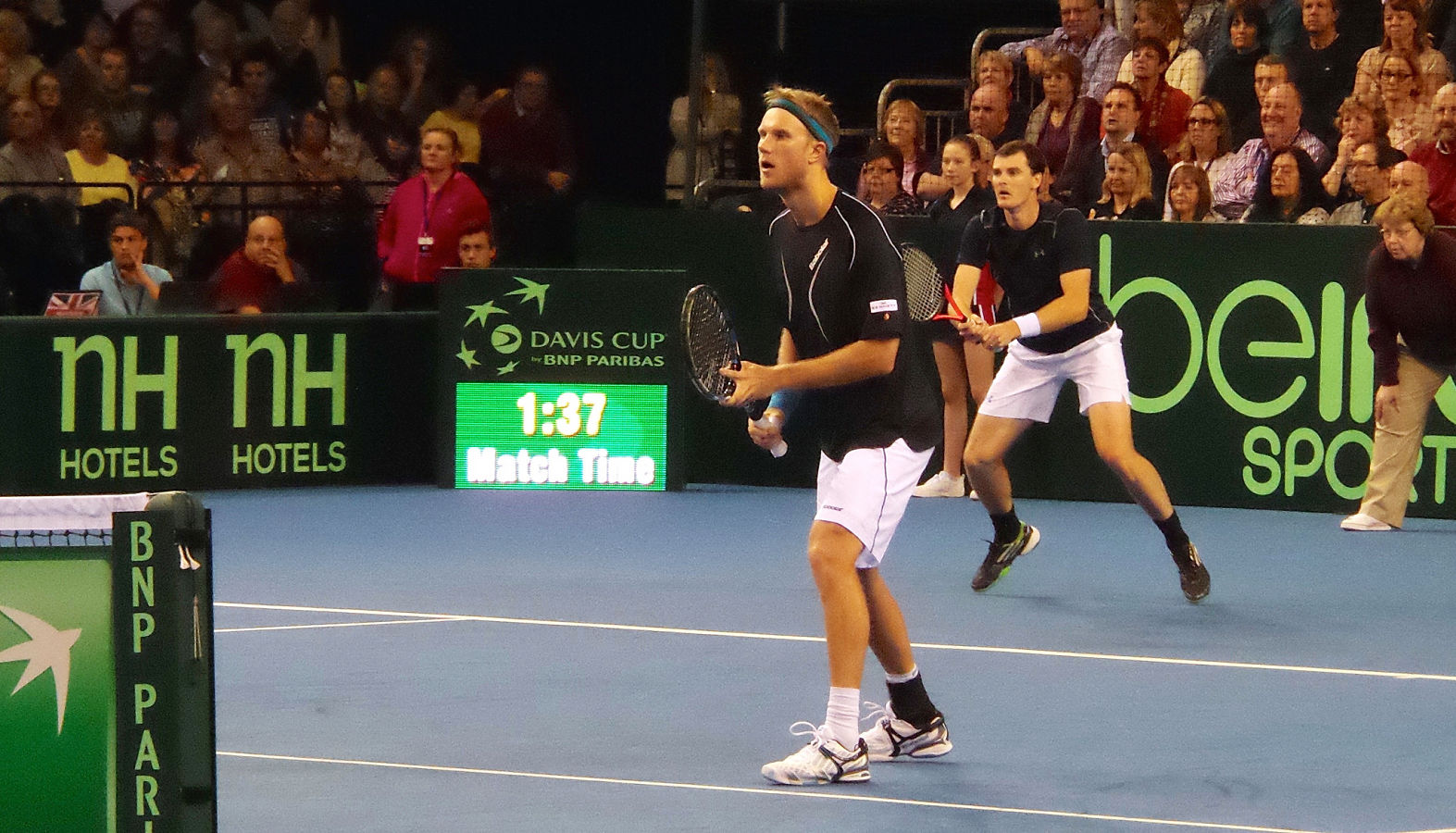Andy Murray’s fist-pump at the end of the first set against John Isner last weekend could have created a small earthquake; such was the force with which it was delivered. Combined with the raw, animalistic shouting, and you could be forgiven for thinking that Murray had just added another Grand Slam to his collection. But no: he had actually only won the first set against a player ranked sixteen places below him in a World Group first-round tie of The Davis Cup.
It is this sort of passion however that makes international tennis so special. Most weeks players are competing for themselves, for individual honours and ranking points. The Davis Cup however gives them a chance to compete in a team atmosphere whilst representing their country. It sounds ideal, but for some reason it struggles to make a dent in the tennis headlines.
For a start, the format is more difficult to figure out than a Rubik’s cube is to a colour-blind person; even seasoned pros seem slightly unsure as to how exactly everything works. Basically, there are five tiers, four of which are divided into different geographic regions, with the top group gloriously entitled the “World Group”. Each group has a complex system of promotion and relegation depending on the countries involved and their previous performances. At the end of the year, the two tops teams from the World Group play each other to be named Davis Cup Champions. It’s safe to say that DNA has a less complicated structure than this.
Then there’s the scheduling, which makes FIFA having a winter World Cup look like a minor stroke of genius. Unlike most other international competitions, it tries to fit its matches in around the set tournament schedule. This makes it near impossible to keep track of what stage the tournament is at, causing confusion amongst fans as to whether it’s a must-win tie or just a dead rubber.
The timing of the ties, in the middle of the season, also wreaks havoc with the schedules of top players who have tournaments either side, and many choose to sit out the tournament to preserve their fitness for the rest of the year.
As a result, the likes of Roger Federer and Stan Wawrinka opted not to compete for Switzerland in the last round, leading to the defeat of the reigning champions to a decidedly average Belgium team. The likes of Rafael Nadal also withdrew from the tournament this year, as many players see The Davis Cup as more of a hindrance than a positive.
Of course, not all players see it as such: Novak Djokovic is a stalwart of the Serbian team, and regularly credits their 2010 Davis Cup success as a springboard to his dominant 2011 season.
Undoubtedly however, Grand Slams are still seen as the main goal in the sport, but if The Davis Cup was given a more exclusive position then perhaps this could change. Making it a quadrennial event would allow the schedule to be developed accordingly and attract more top players, thus giving the tournament some much needed gravitas.
Tennis is one of the most international sports around, with around forty nationalities being represented in the top 100 alone: some people struggle to even name forty countries. It’s a shame that one of tennis’ greatest selling points is regularly viewed as an unwelcome distraction to other tournaments. The passion is there, of that there is no question, but sadly it remains a complex mystery to many outside the sport.
The Davis Cup is in desperate need of a shake up before it slips into obscurity for good, and that truly would be a disaster.

